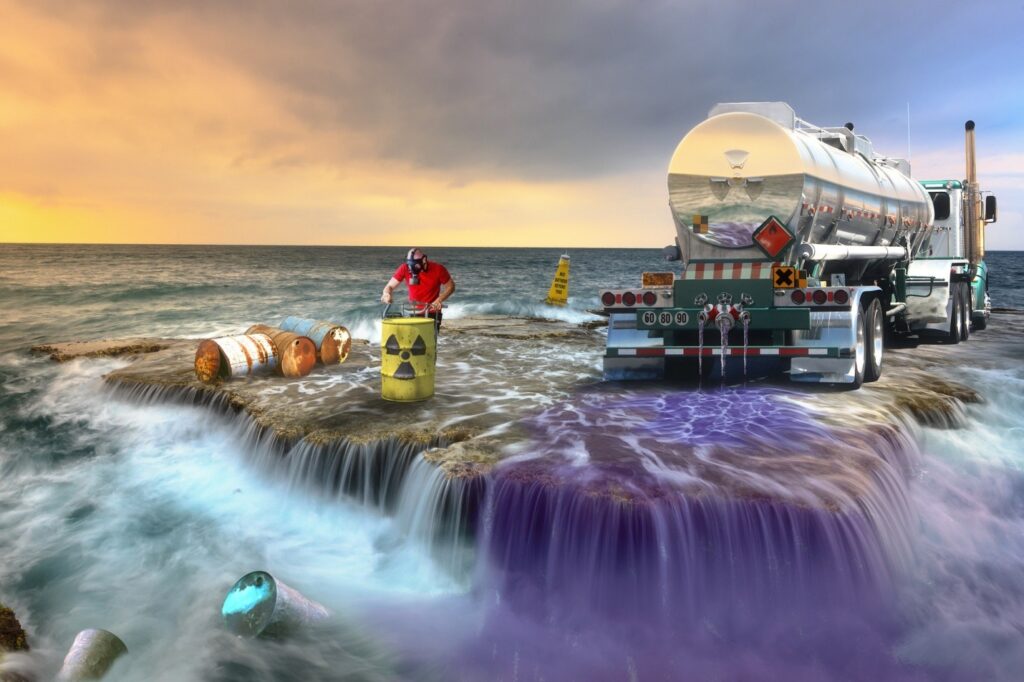All About Reclaim Waste
Table of ContentsIndicators on Reclaim Waste You Need To KnowThe smart Trick of Reclaim Waste That Nobody is DiscussingUnknown Facts About Reclaim WasteA Biased View of Reclaim WasteExamine This Report on Reclaim Waste
Domestic sewer waste refers to the waste and items from a domestic septic container. The appropriate administration and disposal of domestic sewer waste need fluid waste to be transferred to a sewage therapy plant where the proper approaches and devices are used to purify and dispose of waste.
Industrial waste usually includes prospective dangers, such as combustible materials or a blend of fluid and solid waste products, and requires an advanced and comprehensive disposal procedure. The disposal of industrial waste commonly involves the purification of waste prior to transport to ensure risk-free and appropriate disposal. Hazardous waste is created from by-products and overflow of industrial procedures and manufacturing.
This sort of waste can not use the exact same sewer monitoring transport or processes as septic or commercial liquids. The industrial waste monitoring procedure calls for the assessment and screening of fluid waste prior to it undergoes the disposal procedure (liquid waste disposal). Runoff waste is the liquid waste that comes from runoff and excess stormwater in very booming locations or cities
Overflow waste can create contamination and flooding otherwise taken care of correctly. Discover much more regarding sewage system cleansing and waste monitoring. Making sure proper waste administration can avoid disasters and minimize environmental injury. Both people in household setups and specialists in business or production industries can gain from understanding the processes and laws of fluid waste management.
The Main Principles Of Reclaim Waste
Contact PROS Services today to discover concerning our waste monitoring and disposal solutions and the correct ways to look after the fluid waste you create.
(https://padlet.com/leonaube33101/reclaim-waste-hw71hge954tsaxnp)Do you understand what happens to your water when you pull the plug, purge the bathroom or drain pipes the cleaning device? No? Well, it deserves understanding. This supposed 'wastewater' is not just a crucial source yet, after treatment, will certainly be released to our land, rivers or the sea. Made use of water from bathrooms, showers, bathrooms, cooking area sinks, laundries and industrial processes is called wastewater.

water made use of to cool equipment or tidy plant and devices). Stormwater, a form of wastewater, is overflow that moves from farming and city areas such as roof coverings, parks, yards, roadways, paths and seamless gutters right into stormwater drains, after rainfall. Stormwater flows untreated straight to neighborhood creeks or rivers, at some point reaching the sea.
An Unbiased View of Reclaim Waste
In Queensland, many wastewater is dealt with at sewage treatment plants. Wastewater is carried from residential or industrial sites via a system of drains and pump stations, known as sewage reticulation, to a sewer therapy plant.
The Division of Natural Resources encourages neighborhood federal governments concerning managing, operating and maintaining sewerage systems and therapy plants. In unsewered areas, city governments may call for homeowners to set up private or household sewer therapy systems to treat domestic wastewater from commodes, cooking areas, bathrooms and washings. The Department of Natural Resources authorises using family systems when they are shown to be effective.
Many stormwater obtains no treatment. In some new communities, treatment of some stormwater to eliminate trash, sand and crushed rock has started utilizing gross contaminant traps. Wastewater treatment happens in four stages: Gets rid of strong matter. Larger solids, such as plastics and other items mistakenly released to drains, are gotten rid of when wastewater is gone through screens.
Makes use of tiny living microorganisms knows as micro-organisms to damage down and remove remaining dissolved wastes and great bits. Micro-organisms and wastes are included in the sludge.
The Basic Principles Of Reclaim Waste
Nutrient elimination is not readily available at all sewage treatment plants since it calls for costly specialized devices. Clear fluid effluent created after treatment might still include disease-causing micro-organisms - liquid waste disposal melbourne.

A lot of wastewater moves into the sewerage system. Under the Act, neighborhood federal governments carry out authorizations and permits for eco appropriate activities (Periods) involving wastewater launches that could have a regional impact.
Fascination About Reclaim Waste
Or else, examples are taken for laboratory analysis. Typically several examinations are required to develop the levels of each of the various toxins such as oils, heavy steels and pesticides in water. Surveillance supplies valid details concerning water high quality and can confirm that licence problems are being fulfilled. The details gotten via surveillance supplies the basis for making water quality choices.